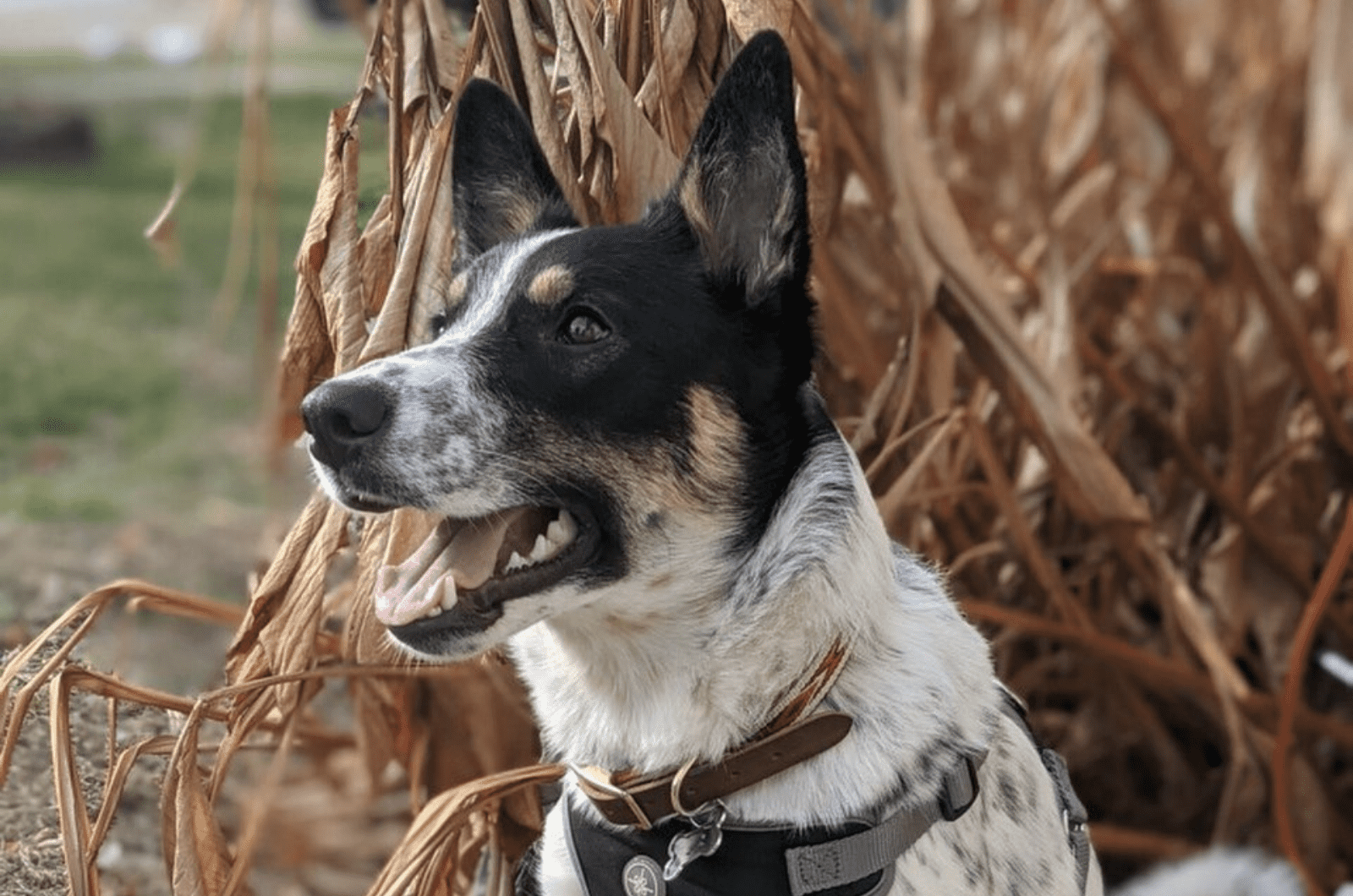There are a lot of breeds out there today. Breeders are developing new breeds as we speak, so it is hard to keep up. The good thing about crossbreed dogs, which some people like to call designer dogs, is that you get a 2 in 1. That means that you get characteristics of both parent breeds.
Blue heeler german shepherd mix is a dog breed that is newer. It was developed about 30 years ago. This mixed breed isn’t very popular, but in my opinion, is one of the best dog mixes out there.
This highly intelligent and loyal dog has a lot of amazing traits that need to be covered. So if you are ready to meet this breed, buckle up, and let’s start.
What Is A Blue Heeler German Shepherd Mix?
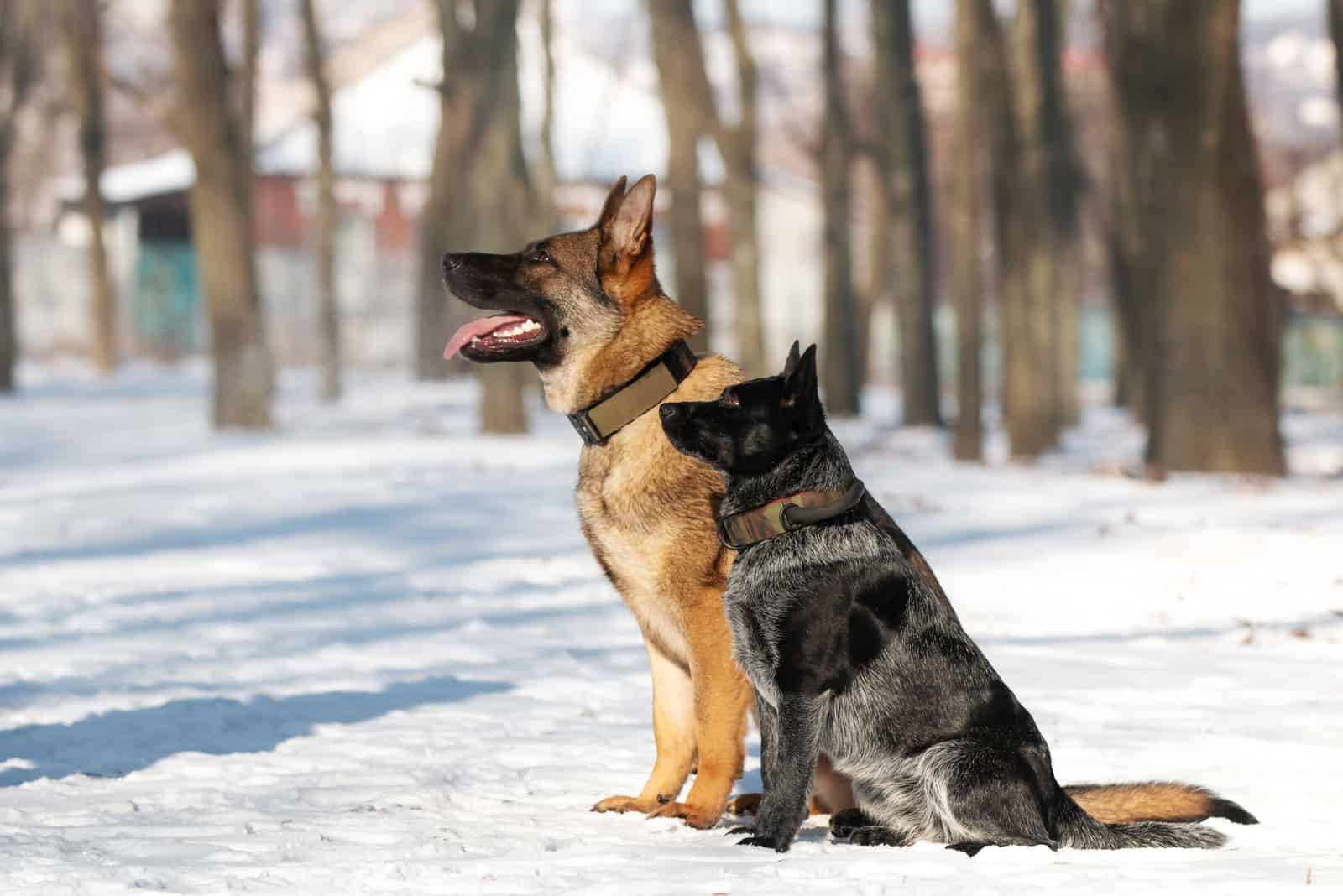
As the name says, the Blue heeler german shepherd mix is a crossbreed between a German shepherd dog (GSD) and a Blue heeler.
The important thing to mention is that both breeds are members of the American Kennel Club (AKC) Herding group.
These two breeds are amazing on their own, so imagine what mixing the two can result in. But first, let’s shortly describe both parent breeds.
The Blue Heeler/ Australian Cattle Dog (ACD)
Blue heeler has a couple of names besides this one. They can be found as Australian cattle dogs or Australian shepherds.
Why heelers you may ask. Well, it is believed that they had tendencies to to nip at the heels of the livestock and herd them.
These dogs are from Australia and were used for herding cattle. Today they are mostly family pets, police dogs, or even therapy dogs. They are large dogs that can grow to be 50-65 cm (around 20 inches) and can weigh around 20 kg (50 pounds).
They come in various colors besides blue. One of the most famous is also red heeler, next is black or even speckled Heeler. They all have a characteristic black mask across their face.
Australian Cattle dogs also used to be crossed with Scottish Highland Collies, Black and Tan Kelpies, and even the iconic Dalmatian.
Dingo DNA
The Blue heeler has some unusual and interesting ancestors. They contain the same blood as Dingos.
What is a Dingo? Well, they are wild dogs that can rarely be domesticated. They love to run free, and they are the reason why Heelers have a bit of a wild look to them.
Since they are a big part of Blue heeler DNA, it is quite possible that your mixed dog has some of the Dingo DNA as well.
The German Shepherd Dog
The German shepherd dog, often abbreviated as GSD, is one of the most popular breeds in the world. They too are large dogs that can grow to be 60 to 65cm (24 inches) and can weigh 30kg (75 pounds).
Even if they are family dogs or working for the police force, they are always characterized as working dogs. They love learning new things, and quickly we may add, pleasing their owners, and completing new tasks every day.
But besides the working side, they are like huge teddy bears and love cuddle time.
An interesting fact about German shepherds is that they were bred in the late 1800s, by a German named Captain Max von Stephanitz. He wanted to breed the best herding dog Germany had ever seen.
Blue Heeler German Shepherd Mix: Appearance
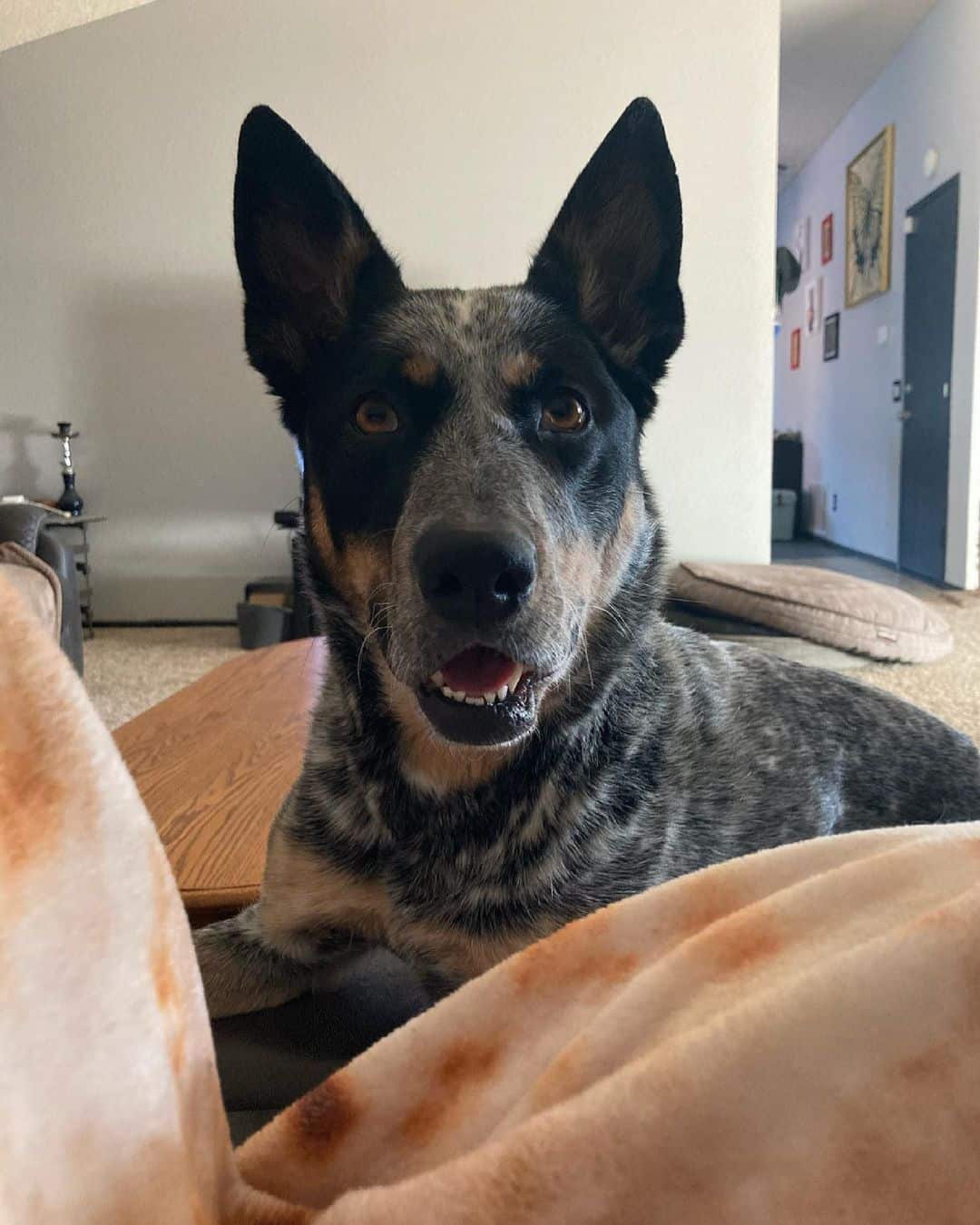
Photo from: @zoeythedog_17
As we already saw, this dog is a hybrid dog that is mixed with two astonishingly beautiful breeds.
You can be sure that your dog can take all the best characteristics of both breeds, and you can end up with one beautiful and interesting Blue heeler german shepherd mix puppy.
But two things they all share in common are upright pointy ears and a muscular build.
Weight And Height
Both breeds are on the large dog side. With the Blue heeler being a bit smaller than the German shepherd, the mix is somewhere in between.
You can expect your mix to reach between 48 to 63 cm (19-25 inches) high and weigh between 18 to 39 kg ( 40-85 pounds) as an adult.
These measures depend a lot on the parents. If you want to estimate how big your dog will get you can meet their parents. The measures should be within these boundaries, but if it ends up being a bit bigger or smaller, it usually means the parents are either one of those things.
Coat Color And Texture
German shepherds have a beautiful long coat, while blue heelers can have either short or long. This is also the thing where their offspring get something in between, meaning they have medium-length coats most of the time.
Sometimes if you see a short and dense coat, or even a long and fluffy coat on this breed, don’t worry it’s perfectly normal.
They inherited a double coat from both parent breeds which means that you can expect a lot of shedding.
Coat color is hard to predict but you can bet that it will turn out to be interesting and unique. Possibilities are that the coat might have brown and tan coloring, and also black and gray tones to it.
Grooming
This working dog has a double-layer coat that serves two purposes: protection and insulation. The inner layer or undercoat is soft, thick, and warm, and keeps the dog’s skin dry. The outer layer of the coat protects the dog from sunburns, and bites and is naturally water-repellent.
The undercoat has its seasonal blow-out, aka. shedding, which helps the dog to adjust to different temperatures. Because of this shedding, you will need to brush your dog at least once every two days. Every day is a way better option.
Grooming isn’t demanding when it comes to this breed. A visit or two to the groomer for a trim in a span of 2 to 3 months is just enough. Especially if your dog has a shorter coat.
A bath should be also once a month or 2. At least once in two weeks, you should clean their ears and around their eyes. Once a week is enough for brushing their teeth.
RELATED: 17 Best Brush For German Shepherd: PAWesome Choices For Your GSD
Blue Heeler German Shepherd Mix: Health Problems
It is known that every dog breed out there has some health issues. It is known that GSDs are prone to quite a few health issues which means that your mix may inherit some of those.
We don’t want to scare you, but we believe that dog owners should be prepared for any possible issue that may cross their path. Better be prepared than sorry.
We made a list of possible health issues that your dog may have.
Hip Dysplasia And Elbow Dysplasia
Hip dysplasia is a common problem with German shepherds but is also not unknown with blue heelers.
This occurs when the thighbone doesn’t fit nicely into the hip joint. It can result in pain, lameness, and in the end arthritis. Elbow dysplasia is a very similar condition that affects the elbow joint.
Unfortunately, if your dog gets either of these conditions, especially if older, the right thing to do is to put them down. But this is only in extreme cases. That’s why you should take your dog for yearly check-ups to the vet.
If found on time, there is a possibility that these problems can be solved with surgery.
Ear Infections
Those pointy ears that all three of three breeds have, can get floppy at some times. Because of that, the ears are susceptible to infections.
Pay special attention to ears when bathing your dog. You need to dry them all the way since the floppy ear can hold on to moisture for a long time.
They love to hunt and roam which can lead to some specks of dirt and even grass getting stuck in their ears which can also cause ear infections.
Eye Problems
Progressive retinal atrophy (PRA) is one of the common eye problems that your dog can face. It causes your dog to, firstly, get partially blind, and after a couple of years, or in some cases, a couple of months, go completely blind.
It can affect one or both eyes. This condition is usually inherited so make sure, when purchasing your puppy, to ask for the health certificates from both parents. A reputable breeder will have no problems showing you everything you ask.
Deafness
Deafness can be inherited but also caused by ear infections that we mentioned earlier. When buying a puppy make sure their sight and hearing are tested.
To be completely sure, you can also test them after a couple of months by doing the Brainstem auditory evoked response (BAER) testing.
Allergies
They tend to be allergic to flea bites and also some nutrients in dog food. They come as rashes or hives on the dog’s skin which can cause a lot of discomfort and some potential health problems.
The breeder can give you any potential allergies the dog’s parents have, and you can also do some tests when going to the vet just in case.
Blue Heeler German Shepherd Mix: Temperament And Personality
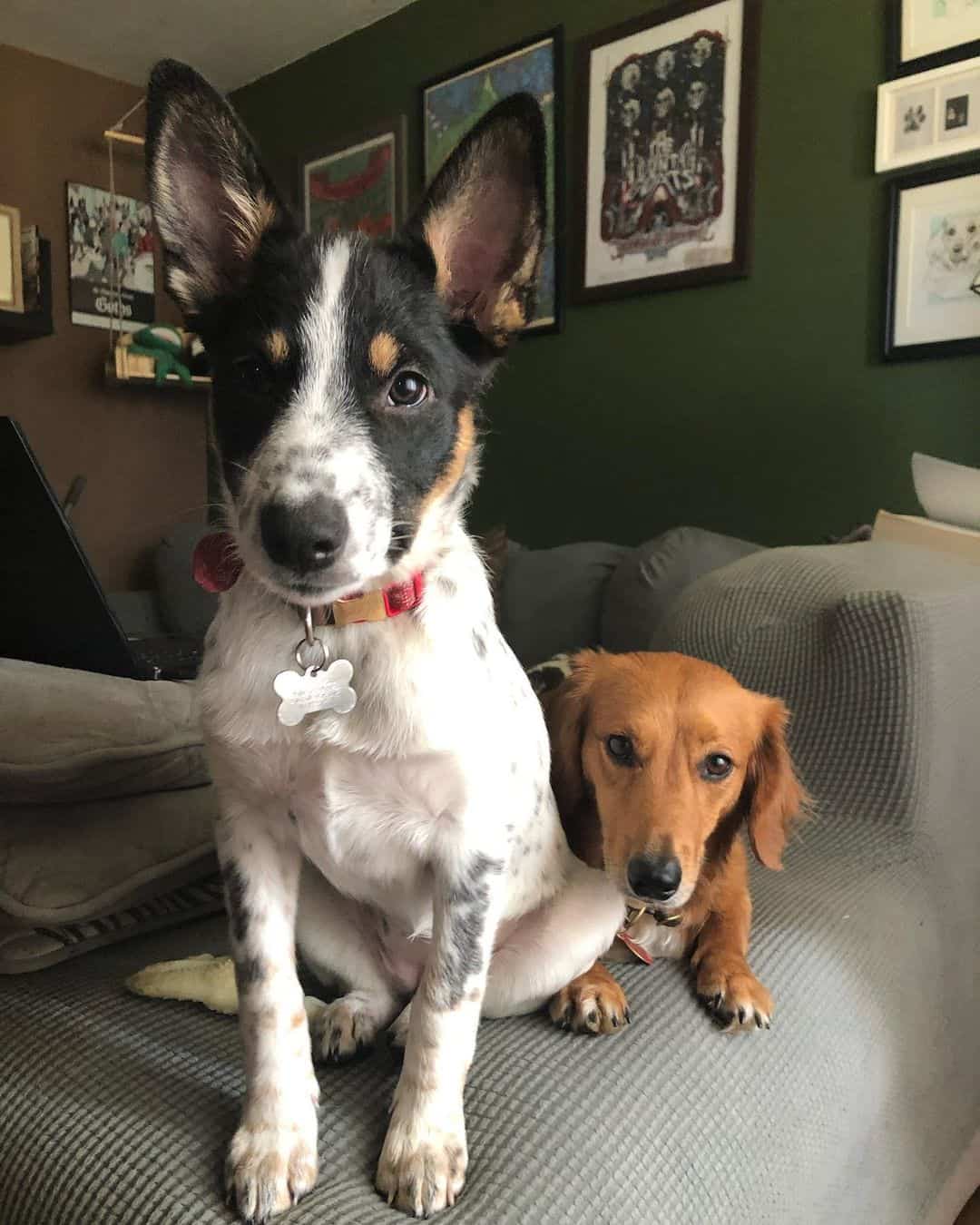
Photo from: @girl.scoutcookie
This breed is full of various temperaments and personalities. It is impossible to list all of them, but we are going to mention the best and the most dominant ones.
Guard Dog
They have a natural instinct of being protective of their owners which can make them great as guard dogs. Besides their friendly nature, if trained properly, they can be very cautious of strangers.
When you are out and about with your dog they are always alarmed and keeping an eye on you. Even if you don’t notice it.
More noticeable and prominent is when they are on their territory, meaning their home. They become a watchdog and you can clearly see it.
Make sure if you decide to have guests to prepare both the dog and the people coming.
A smart thing to do is to let the dog sniff all the people before entering your house.
Socialization Skills
As already mentioned, they can pride themselves on being both friendly and protective. It might sound like an odd combination, and we agree.
You need to start young. If they don’t get used to socialization when puppies, you can have some serious trouble, and even end up with an aggressive dog.
Luckily you don’t need a lot of work to sparkle their socialization skills. If you start on time, your dog will be able to surround themself with any other dogs or people that cross their path.
Life will surely be easier for them and you as well.
High Energy Dog
Herding dogs needed a lot of energy to do their job properly. It stuck with them today as well. Daily they need a lot of exercises and physical activity.
Their high energy levels are the reason why these dogs make great companions for people with an active lifestyle.
Make sure that their daily physical activities are for 2 hours or even more.
Working Dog
Both of their parent breeds were bred to be working dogs, to which this mixed breed is no exception.
They make high-quality police and service dogs. Since it runs through their blood, if you get this dog to be a family pet, make sure to always have prepared some tasks that your dog can fulfill.
Intelligence
Since being mixed with one of the most intelligent dogs in the world, you can be sure that your dog inherited a lot of that intelligence.
This goes hand in hand with the work dog aspect. From being a puppy all the way to their old days, they need mental stimulation. Quick learning is their specialty and can be improved with positive reinforcement.
Potty training, teaching them feeding schedules, not to nibble on things and people etc. is going to be easy peasy with this breed.
Blue Heeler German Shepherd Mix: Exercise Needs
As we mentioned before, all three dogs have been bred to be work dogs. That means that they are in constant movement. Today’s blue heeler germans shepherd mix doesn’t really get that much of exercise.
Make sure that you don’t over-exercise puppies, especially when they are not finished growing. It can cause them some serious bone damage that can only amplify as they get older.
Around the 12-month mark is the time when you can start more intense exercising.
Try to make the exercise session diverse because these intelligent minds can get bored easily. Some of the exercises can be swimming, hiking, running, playing catch, etc.
The perfect daily sessions should last a minimum of an hour, two hours or more is even better.
How Do You Train A Blue Heeler German shepherd mix?
Unlike exercising, training should start as early as possible. Use positive reinforcement training methods like praise, pats, treats, and playtime when training your puppy.
Some skills that they need to learn come more naturally for both you and your puppy. Some of those skills are potty training, getting used to the leash, socialization, etc.
Other skills are more to keep their mind occupied, and to make your puppy’s training more interesting. Giving the paw, rolling over, sitting, and staying, are just some of the things your dog can learn.
Why do we emphasize the fact to start young? This hybrid dog without a doubt is intelligent but the other thing they may show is stubbornness. ˝You can’t teach an old dog new tricks˝ is the perfect saying for this breed.
It isn’t impossible, but as they get older they get more stubborn. You can avoid this with proper training at a young age. Puppies can be impatient sometimes, but it is more manageable than an older stubborn dog.
Another thing you need to know is that they can have a high prey drive, which means they like to go after small animals. It shows when they are really young and that is the time you need to train them from doing this.
Blue Heeler German Shepherd Mix: Nutrition Requirements
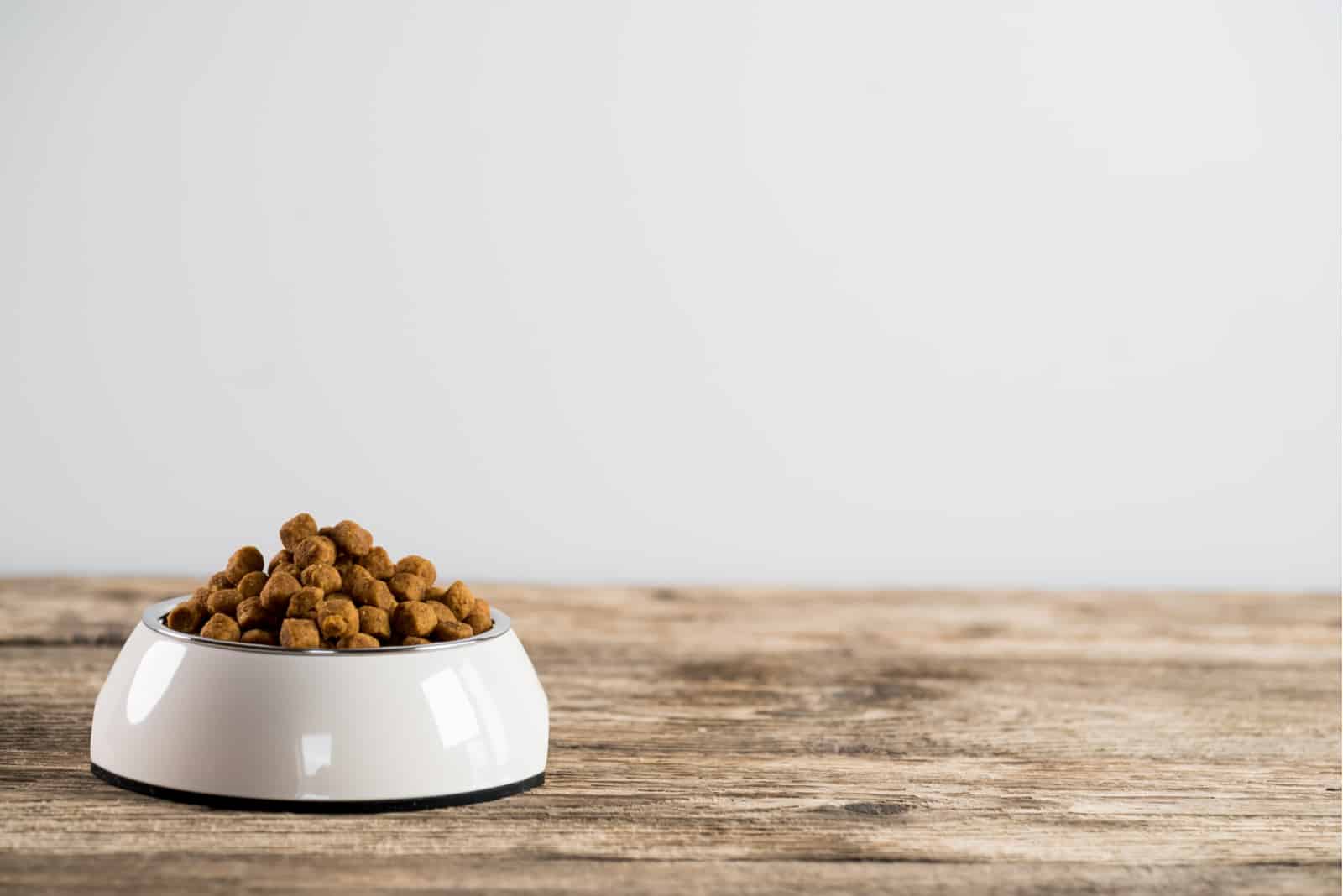
You need to make sure that your dog gets all the right nutrients in the right amount. If you are an inexperienced dog owner the best thing you can do is consult the vet and even the breeder that you decided on.
There are some guidelines that almost every dog owner should follow. We made it as clear as possible so you don’t have any difficulties understanding it.
It is important that their diet consists of protein, carbohydrates, and healthy fats ( fruits and vegetables are optional). Dogs need somewhere between 18 and 30 percent of protein. It depends on their age and activity level.
For example, the Blue Heeler feeding chart states that good protein sources are meat, eggs, fish, legumes, and dairy products like cottage cheese. When talking about meat, your dog should be given cooked meat rather than raw.
Healthy carbohydrates such as sweet potatoes, whole oats, brown rice, barley, banana, and quinoa need to be a part of your dog’s nutrition.
If you decide to feed your dog with dog food, make sure it is high quality and has everything a dog needs. Even consider adding supplements, like fish oil for Omega-3, and important vitamins.
Your dog should eat 2 to 3 cups of dog food a day, which is equally divided into 2 to 3 meals. There are various dog food choices, some might be more expensive but there are cheaper options you can find, especially on amazon.
RELATED: Blue Heeler Growth Chart – How Big Will Your Blue Heeler Get?
FAQ:
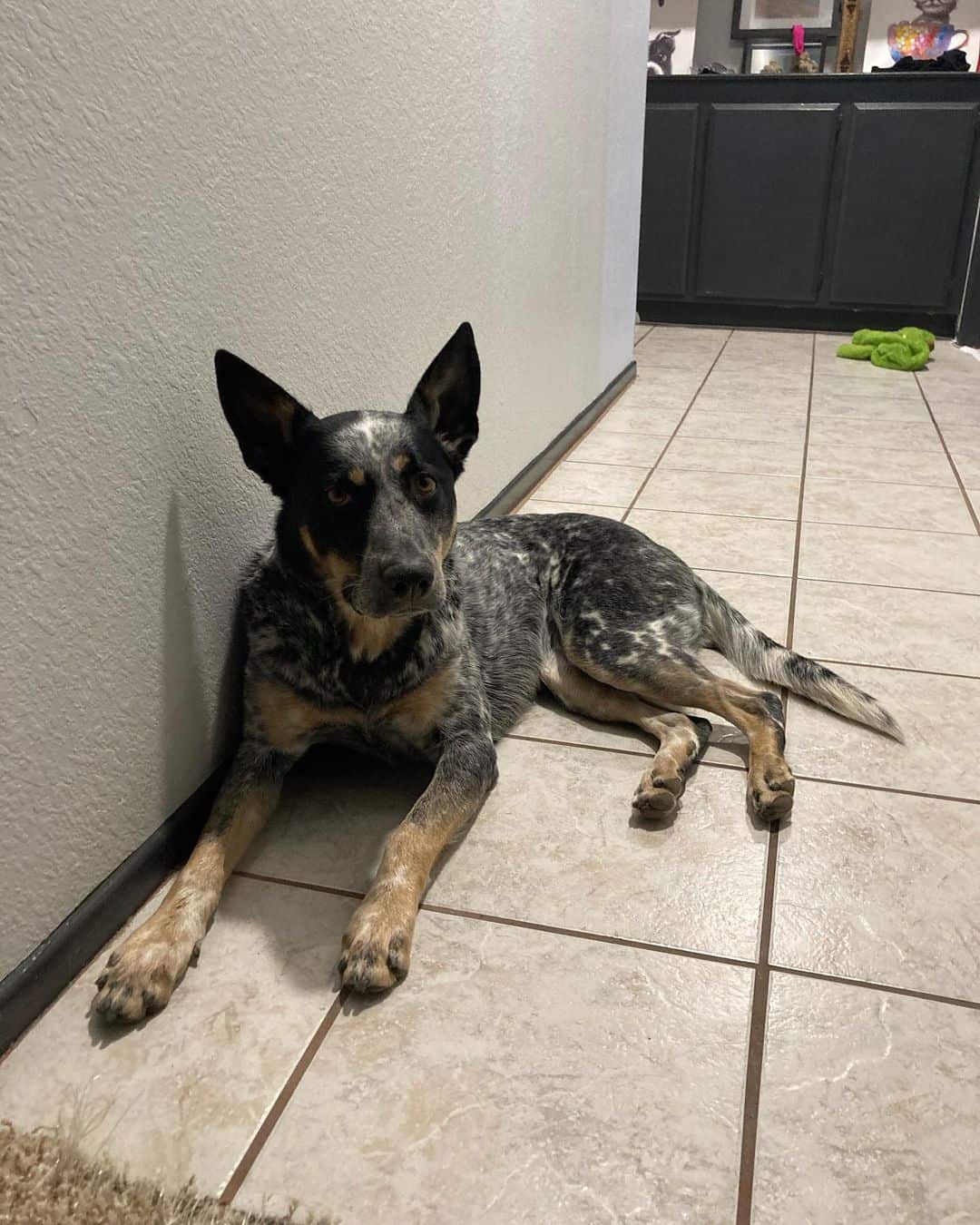
Photo from: @zoeythedog_17
What Is The Price Of German Shepherd Cattle Dog Mix Puppies?
It is hard to tell you the exact price since they are really rare. If you find a reputable breeder the price can go up to 3 000$.
Some people might not know the value of this dog and might sell them for 500 to 800$. Whatever breeder you come across, make sure that they show you all the health certificates, show you both parents of your future puppy, and are open to communicating and answering all your questions.
Another good option is to adopt one if the opportunity arises.
What Is The Lifespan Of German Shepherd Blue Heeler Mix?
This breed can live to be 12 to 15 years old. If there are some health issues their lifespan can be shortened and last approximately 8 to 10 years.
Whatever age your dog reaches make sure all the years spent with you are filled with love and happiness for both you and your dog.
Are Blue Heeler German Shepherd Mix Dogs Aggressive?
Like any dog, the blue heeler german shepherd mix can also become aggressive if it isn’t properly trained, exercised, and socialized.
They might have a strong muscular look like a pit bull, but they share a soul of a golden retriever or labrador. Cuddling isn’t their specialty but don’t be fooled, they show love differently.
Guarding you, and calling you to a playtime are just two ways for your dog to express love. Aggression doesn’t run through their blood so make sure you do everything for that to stay that way.
Is A Blue Heeler German Shepherd Mix Good With Kids?
These mixed dogs are not your usual family dogs. Yes, they make amazing family pets but there are a lot of things to consider.
First, we like to emphasize that they are better with older children. When it comes to younger kids they might be a bit unpredictable. Of course, if you are a bit more experienced dog owner and if you get your dog as a puppy younger children shouldn’t be a big problem. They might be best friends growing up together.
We don’t recommend getting this dog if you live in an apartment. The exception is if you live a very active lifestyle and bring your dog everywhere with you. A house with a yard is a better option for this active breed.
All in all blue heeler German shepherd mix dogs can make amazing family pets but a lot of training, patience, and exercising needs to be done.
To Sum It Up
Blue heeler German shepherd mix dogs are really unique. They aren’t your standard working dog. Great life companions, guarders, intelligence and resilience are just some of their characteristics.
Yes, they might be stubborn and too much to handle sometimes, but it is all worth it because you end up with a dog that will love, guard, and respect you for the rest of their lives.
Read Next: The German Shepherd Coyote Mix: Everything You Need To Know
